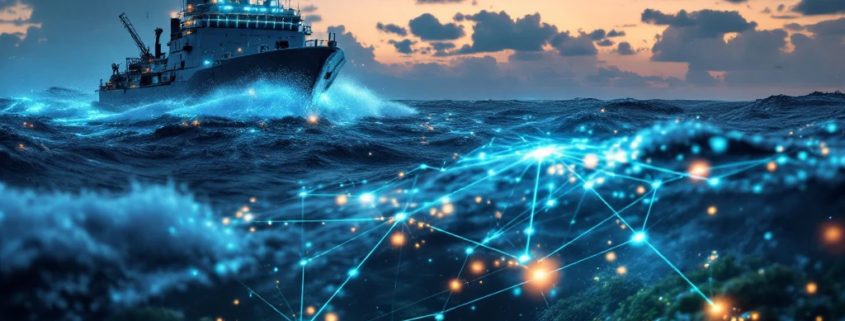What Are the Challenges in Integrating IoE in Marine Environments?
Implementing Internet of Everything (IoE) solutions in maritime settings presents unique difficulties due to harsh environmental conditions, connectivity limitations, and specialized security requirements. Vessels face challenges with saltwater corrosion, extreme temperature variations, and constant vibration that can damage standard IoE hardware. Additionally, intermittent satellite coverage, limited bandwidth, and cybersecurity vulnerabilities at sea create significant hurdles for implementing comprehensive digital systems on marine vessels. These obstacles require specialized approaches and robust technologies specifically engineered for maritime applications.
Understanding IoE integration in marine environments
The maritime industry stands at the threshold of a digital revolution through Internet of Everything technology. Unlike conventional IoT systems, maritime IoE creates an interconnected ecosystem of sensors, devices, people, and processes that can transform vessel operations. This connectivity offers tremendous potential benefits including fuel optimization, predictive maintenance, enhanced navigation, and improved safety protocols.
However, marine implementations face distinct challenges compared to their land-based counterparts. Vessels operate in isolated environments, often far from traditional IT infrastructure, while being subjected to harsh physical conditions. The stakes are also higher—system failures at sea can lead to severe consequences for safety, environmental protection, and operational continuity.
Maritime IoE requires specialized engineering considerations to ensure robustness in these unique operating environments. Solutions must be designed with redundancy, durability, and maritime-specific communication protocols in mind from the beginning.
What challenges do harsh marine conditions pose to IoE devices?
The marine environment presents one of the most demanding settings for electronic equipment deployment. Saltwater exposure represents perhaps the greatest threat to IoE hardware. Even minimal salt spray can accelerate corrosion of connectors, circuit boards, and sensors, drastically reducing their operational lifespan if not properly protected.
Humidity constantly challenges equipment integrity, with condensation forming inside devices as vessels move between temperature zones. This moisture can short-circuit sensitive components and accelerate degradation of materials. Alongside humidity, temperature fluctuations from freezing conditions to extreme heat stress components through expansion and contraction cycles.
Constant vibration from engines and wave impacts creates another significant challenge. These mechanical stresses can loosen connections, damage soldered joints, and eventually lead to hardware failures. Additionally, electromagnetic interference from various shipboard systems like radars and communication equipment can disrupt data transmission and sensor readings.
Any IoE implementation must incorporate marine-grade hardware with appropriate IP ratings, corrosion-resistant materials, shock mounting systems, and electromagnetic shielding to withstand these conditions over extended periods without maintenance access.
How does connectivity reliability impact marine IoE systems?
Connectivity represents a fundamental challenge for maritime IoE implementations. Vessels frequently operate in areas with intermittent satellite coverage, creating gaps in data transmission that can compromise real-time monitoring and control systems. When connections are available, bandwidth limitations often restrict the volume and type of data that can be transmitted.
Data transmission latency presents additional complications for time-sensitive applications. The delay between sending and receiving information can range from seconds to minutes depending on location, satellite availability, and atmospheric conditions. This latency makes implementing certain control systems particularly challenging.
Maintaining network integrity during remote operations requires sophisticated approaches to data management. Systems must be designed to function autonomously during connectivity gaps, storing critical data locally and synchronizing when connections become available. Priority protocols must determine which information requires immediate transmission versus what can be held for later synchronization.
Effective maritime IoE systems employ multiple connectivity methods including satellite, cellular, and even mesh networks when vessels operate in proximity to each other. These redundant communication paths help ensure critical information flows even when primary channels fail.
What are the critical security concerns for maritime IoE implementations?
Cybersecurity vulnerabilities take on new dimensions in maritime IoE systems. Vessels essentially become floating networks of connected devices, creating expanded attack surfaces for potential intrusions. Navigation systems, propulsion controls, and cargo management platforms all become potential entry points for cyber threats if not properly secured.
The potential risks to vessel operations from security breaches are substantial. Compromised systems could affect navigation accuracy, engine performance, or safety monitoring—all potentially endangering crew, cargo, and the vessel itself. Remote attacks could theoretically allow unauthorized control of critical systems or data theft.
Maritime communication networks must adhere to various regulatory compliance requirements from organizations like the International Maritime Organization (IMO), which has established guidelines for cyber risk management. These regulations continue to evolve as technology advances and new threats emerge.
Effective security strategies for maritime IoE must include network segmentation, strong authentication protocols, encrypted communications, regular security audits, and comprehensive crew training. Systems should be designed with security as a foundational element rather than as an afterthought.
How can CAN bus technology overcome marine IoE integration challenges?
Controller Area Network (CAN) bus technology offers a particularly robust solution for addressing many marine automation challenges. Originally developed for automotive applications where reliability in harsh conditions is paramount, CAN bus systems have proven equally valuable in maritime environments.
The inherent advantages of CAN bus include exceptional noise immunity, error detection capabilities, and reliable performance even in electronically noisy environments. Its deterministic communication protocol ensures consistent message delivery timing—critical for real-time control systems. The physical layer employs differential signaling that resists electromagnetic interference commonly found on vessels.
CAN bus provides an ideal foundation for connecting various ship systems including engine controls, navigation equipment, power management, and environmental monitoring. The standardized protocol allows devices from different manufacturers to communicate seamlessly within the same network architecture.
The technology’s resilience makes it particularly suitable for marine environments where system reliability directly impacts safety and operational efficiency. It can function effectively despite vibration, temperature fluctuations, and electromagnetic interference that would compromise other communication technologies.
Key considerations for successful IoE deployment in marine environments
Successfully implementing IoE in maritime applications requires specialized expertise and careful planning. System designers must prioritize environmental protection through appropriate enclosures, sealing methods, and corrosion-resistant components. Hardware should be certified for marine use with appropriate ingress protection ratings.
Redundancy represents another critical consideration. Critical systems should feature backup communication pathways, power sources, and processing capabilities to ensure continued operation during component failures. Data management strategies must account for intermittent connectivity, employing local processing capabilities and intelligent synchronization protocols.
Specialized knowledge in maritime automation is essential for effective implementations. Engineers must understand not just IoE technologies but also the specific operational requirements and environmental constraints of marine vessels. This specialized expertise ensures solutions address the unique challenges of the marine environment.
At TK Engineering Oy, we’ve developed our marine automation solutions with these specific challenges in mind. Our CAN bus implementations provide the reliability and resilience necessary for maritime applications while enabling the comprehensive connectivity that modern vessel operations demand. By understanding the unique challenges of marine environments, we deliver systems that perform consistently even in the most demanding conditions.
Interested in marine automation and control systems?
Browse our marine case studies to see how we support safe, efficient operations in harsh marine environments through smart CAN networking.



